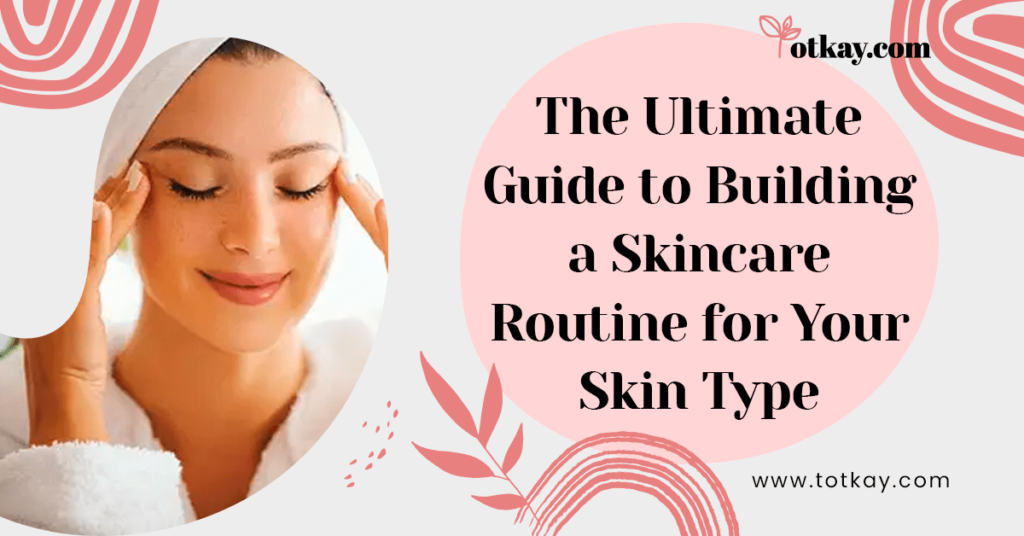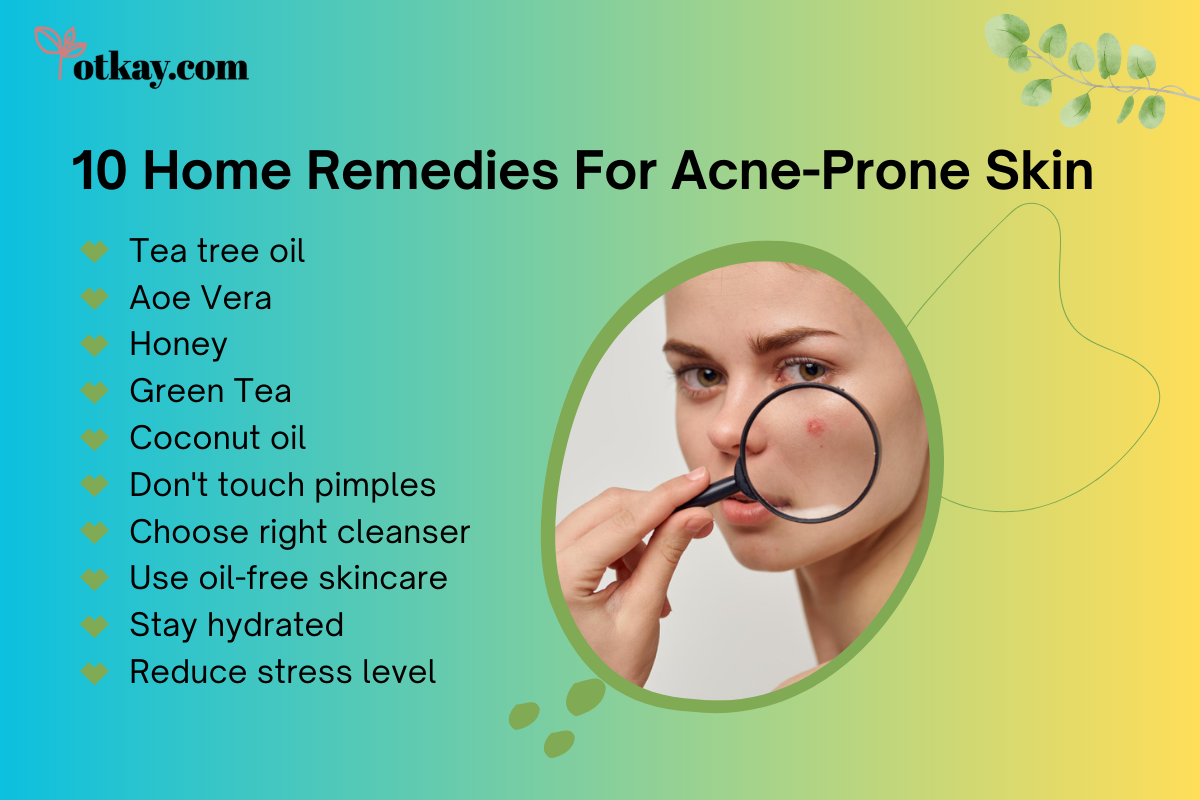The Ultimate Skincare Routine for All Skin Types

The quest for healthy, glowing skin is a journey that requires understanding, patience, and the right approach. With countless products and a sea of information available, creating an effective skincare regimen can feel overwhelming.
However, a successful Skincare Routine for all skin types isn’t about using a hundred products; it’s about knowing what your skin needs. This guide is designed to simplify that process, walking you through every step to build a personalized routine that caters to your unique needs and helps you achieve the radiant skin you’ve always wanted.
Understanding Your Skin Type
Understanding your skin is the cornerstone of effective skincare. Before you embark on building a personalized routine, you must identify your skin type. Skin types typically fall into a few categories, including:
Your skin type lies at the foundation of your skincare routine. Here’s an in-depth look at different skin types and common concerns:
Oily Skin
- If you find that your skin tends to be shiny, particularly in the T-zone (forehead, nose, and chin), you likely have oily skin.
- Oily skin can be prone to enlarged pores and is more susceptible to acne.
- It’s essential to choose products that help control excess oil and prevent breakouts. Look for cleansers and moisturizers specifically formulated for oily skin.
Sensitive Skin
- Sensitive skin is prone to redness, irritation, and discomfort, often in response to certain products or environmental factors.
- Identifying sensitive skin is crucial to avoid triggering adverse reactions.
- Opt for gentle, fragrance-free products. Avoid harsh exfoliants and choose skincare with soothing ingredients like aloe vera and chamomile.
Dry and Sensitive Skin
- Dry skin often feels tight, flaky, or rough. When dryness is combined with sensitivity, it’s essential to use gentle, hydrating products.
- Look for a gentle cleanser that won’t strip your skin of its natural oils.
- Ceramides are crucial for skin barrier strength and overall health (and important for those with dry skin and eczema).
Combination Skin
- Many people have combination skin, meaning that different areas of their face exhibit characteristics of multiple skin types.
- For instance, you might have an oily T-zone but dry cheeks. In such cases, a balanced approach is key.
- Use a mild, pH-balanced cleanser, and select products that target your specific issues.
- This might mean using an oil-control product in the T-zone and a hydrating product on the cheeks.
Normal Skin
Lucky individuals with normal skin have well-balanced hydration, few blemishes, and minimal sensitivity. While normal skin requires less intensive care, it still benefits from a basic routine that includes cleansing, moisturizing, and sun protection.
Specific Skin Concerns
Beyond skin type, identify any specific concerns you want to address. These could include:
- Acne: If you’re dealing with breakouts and blemishes, you’ll need a regimen that targets acne-prone skin. This may include salicylic acid or benzoyl peroxide-based products.
- Aging: To combat signs of aging, like fine lines and wrinkles, an anti-aging routine is necessary. Look for products containing retinol, hyaluronic acid, and antioxidants like vitamin C.
- Dark Spots: Dark spots, also known as hyperpigmentation, can be addressed with specific treatments and ingredients, such as products with niacinamide or alpha-hydroxy acids.
By identifying your skin type and specific concerns, you’re better equipped to select the right products and create a tailored routine that works for you.
Creating Your Personalized Skincare Routine for all Skin Types
A consistent daily regimen is the bedrock of healthy skin. Here is a simplified breakdown of the core steps for a Skincare Routine for all skin types.
Building a Simple Daily Routine:
Cleansing:
- Start your day with a gentle cleanser to remove overnight impurities and prepare your skin for the day ahead.
- Choose a cleanser suitable for your skin type. For instance, if you have oily skin, opt for a foaming cleanser, while those with dry skin should go for a hydrating, cream-based cleanser.
Toning:
- Toning is optional for some, but it can offer benefits like pH balancing, refreshing your skin, and preparing it for subsequent products.
- For toner to work its magic and balance out the skin’s pH levels, making it harder for bacteria to live on the skin, the toner must fully immerse into the skin.
- You need to wait a few minutes between applying a toner and moving on to the following skin care routine steps.
Serum:
- Serums are packed with potent ingredients and are designed to address specific skincare concerns.
- For example, if you want to target fine lines and wrinkles, look for a serum with retinol or hyaluronic acid.
- If you have dark spots, a serum containing vitamin C or niacinamide can be beneficial.
Moisturizing:
Regardless of your skin type, moisturizing is a non-negotiable step. For dry skin, opt for a rich, hydrating moisturizer. Oily skin types should choose a lightweight, non-comedogenic moisturizer to prevent clogged pores.
Sunscreen:
- Sunscreen is the most critical step in your morning routine. It protects your skin from harmful UV rays, preventing premature aging and reducing the risk of skin cancer.
- Select a broad-spectrum sunscreen with at least SPF 30 and apply it daily, even on cloudy days.
Exfoliation and Treatments:
- Depending on your skin type and concerns, you may introduce exfoliation (chemical or physical) a few times a week.
- Additionally, specific treatments can be added at night, such as retinoids for anti-aging or benzoyl peroxide for acne.
Lip Care:
Don’t forget to give some TLC to your lips. Apply a hydrating lip balm, especially in dry or cold conditions.
Skin Care Routine Sample:
Morning:
- Cleanser
- Toner (if desired)
- Serum
- Moisturizer
- Sunscreen
Evening:
- Cleanser
- Serum
- Moisturizer
- Exfoliation (as needed)
- Specific treatments (as needed)
Remember that it’s essential to tailor this routine to your specific skin type and concerns. If you’re unsure about which products to use, consult with a dermatologist to receive personalized recommendations.
In the next section, we’ll dive deeper into the meaning of “skin care” and help you understand the ingredients in your products.
A Quick Guide to Essential Skincare Ingredients
| Ingredient | Best For | Primary Benefit |
| Hyaluronic Acid | All Skin Types | Deeply hydrates and plumps the skin. |
| Retinol | Anti-Aging & Acne | Boosts cell turnover and stimulates collagen. |
| Niacinamide | Dark Spots & Pores | Brightens complexion and minimizes pore appearance. |
| Salicylic Acid | Oily & Acne-Prone | Clears pores and reduces breakouts. |
| Vitamin C | All Skin Types | Protects from environmental damage and evens skin tone. |
| Ceramides | Dry & Sensitive Skin | Strengthens the skin’s natural moisture barrier. |
Advanced Steps for a Personalized Regimen
As you become more attuned to your skin and its unique requirements, you might want to add extra steps to your routine. Here’s how you can tailor your skincare regimen to adapt to your changing skin needs or personal preferences:
Targeted Treatments:
- Sometimes, specific skin concerns like acne, hyperpigmentation, or fine lines require more specialized care.
- You can introduce targeted treatments such as acne spot treatments, vitamin C serums, or retinol products to address these concerns.
Face Masks:
- Face masks can be a luxurious addition to your skincare routine. There are various types of masks, including clay masks for deep cleansing, sheet masks for hydration, and exfoliating masks to remove dead skin cells.
- Depending on your skin’s condition, you can use masks once a week or as needed for a spa-like treatment.
Facial Oils:
Adding a facial oil to your routine can provide an extra boost of hydration and nourishment. Oils like argan oil, rosehip oil, or jojoba oil can be applied as the last step in your routine to lock in moisture.
Eye Cream:
- If you have specific concerns like dark circles, puffiness, or fine lines around your eyes, an eye cream can be a beneficial addition.
- Gently pat it around your eye area after cleansing and before applying your moisturizer.
A Few Things to Keep in Mind
As you embark on your skincare journey, it’s crucial to keep a few important tips in mind to ensure that you achieve the best results and maintain healthy, radiant skin. Here are some key pointers to remember:
- Consistency is Key: Make sure to follow your routine daily, both in the morning and at night, to maximize its effectiveness.
- Patience pays off: Achieving visible results in skincare often takes time. Be patient and give your routine time to work, typically around 6–8 weeks.
- Adjust for the Season: Your skin’s needs can vary with the seasons. Adjust your routine and product choices accordingly.
- Sunscreen is non-negotiable: UV protection is perhaps the single most crucial step in your skincare routine. Look for broad-spectrum protection and an SPF of at least 30.
- Be Gentle: Avoid harsh scrubbing, hot water, and excessive rubbing. Use lukewarm water and a gentle, sulfate-free cleanser. Pat your face dry with a soft towel instead of rubbing.
- Pay Attention to Your Skin: Your skin’s condition can change over time, so it’s essential to pay attention to how it reacts to different products.
- Cleanse Twice a Day: Cleaning is a vital step in both your morning and nighttime routines. It removes impurities, excess oil, and makeup. Make sure to choose a cleanser suitable for your skin type.
- Consult a Professional: If you have specific skin concerns or conditions, consider consulting a dermatologist. They can provide expert advice and recommend treatments or products tailored to your needs.
By remembering these important tips, you’ll be better equipped to maintain a skincare routine that promotes healthy, radiant skin. Consistency, patience, and proper care are the cornerstones of an effective skincare regimen.
How do I make Sure Everything in My Skincare routine is Safe?
Ever notice the buzz around “clean beauty” lately? It’s a term that’s popping up everywhere as more of us look for products that are a little kinder to our skin and the planet. If you’re curious about diving into the world of clean skincare and want to make sure you’re using safe stuff, here’s a friendly little guide to get you started:
- Become a label detective. This is your number one superpower! Instead of just glancing at the front of the bottle, flip it over and read that ingredient list. You’ll want to look out for things like parabens, sulfates, and synthetic fragrances that some people find irritating.
- Don’t get fooled by marketing hype. Just because a brand says it’s “clean” doesn’t mean it’s the right fit for you. True transparency is what matters. Find brands that are open about what they put in their products and why.
- Listen to your skin. “Clean” doesn’t automatically mean “perfect for your skin.” Whether you’re oily, dry, or super sensitive, your products still need to tackle your specific concerns. So, choose ingredients that work for your skin type, not just because they’re trendy.
- Go fragrance-free (if you’re sensitive). Lots of people find that fragrances, whether they’re from a lab or from an essential oil, can be a major cause of skin irritation. If your skin gets red or itchy easily, a fragrance-free product is usually a safer bet.
- The Golden Rule: Patch Test. Before you go all-in on a new product, dab a tiny bit on a small, discreet area of your skin (like behind your ear or on your inner arm). Wait a day to see if your skin has a grumpy reaction. Better safe than sorry!
- When in doubt, ask a pro. If you’re ever completely lost or have a specific skin condition, a dermatologist is your best friend. They can cut through all the noise and give you personalized advice you can trust.
Conclusion
So, where does that leave us? The world of skincare might seem complicated, but at its heart, it’s really about a few simple, powerful steps. Remember, the ultimate secret isn’t a single “miracle” product; it’s about getting to know your unique skin, whether it’s oily, dry, or a mix of both.
Once you understand what your skin needs, building a foundational skincare routine for all skin types becomes easy. With a consistent routine that protects it in the morning and helps it repair at night, you’re on your way to a healthier complexion.
Be gentle, be patient, and don’t be afraid to add those targeted treatments when you need a little something extra. The journey to a healthy, glowing complexion is a rewarding one, and the best time to start is now!
Frequently Asked Questions
How do I find my skin type?
Wash your face, wait an hour, and observe. Dry skin feels tight, oily skin is shiny all over, and combination skin is shiny in the T-zone with dry cheeks.
What’s the right product order?
Start with the lightest products (toner, serum) and finish with the heaviest (moisturizer, sunscreen).
Are morning and night routines different?
Yes. Your morning routine focuses on protection (sunscreen), while your night routine is for repair and targeted treatments.
Do I need daily sunscreen?
Yes. Sunscreen is essential every day, even indoors or on cloudy days, to prevent aging and damage.
How long until I see results?
Be patient. It typically takes 4 to 12 weeks of consistent use to see noticeable changes.
Are “clean” products always safe?
No. “Natural” or “clean” labels do not guarantee a product is safe or won’t cause a reaction. Always do a patch test.

Hi, I’m a dedicated writer at Totkay.com, passionate about sharing practical tips and solutions to make your life easier. Explore my articles for helpful insights and valuable advice. Stay connected for more expert content!






